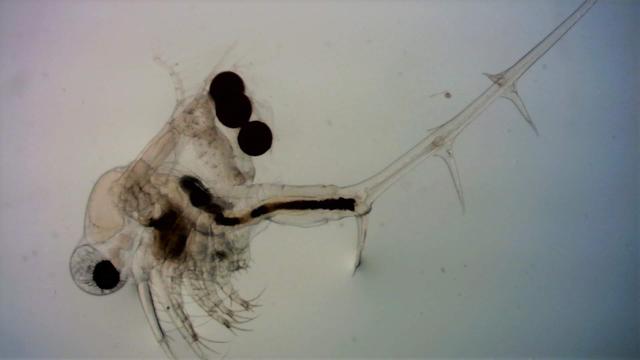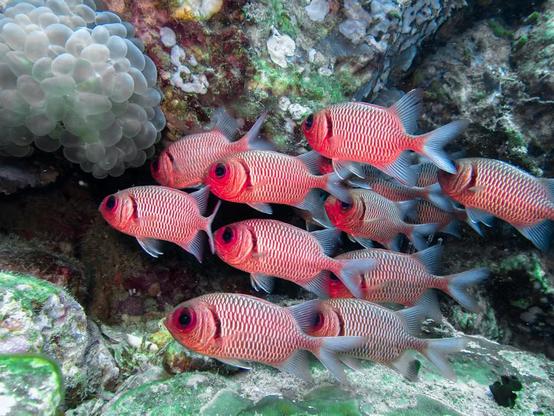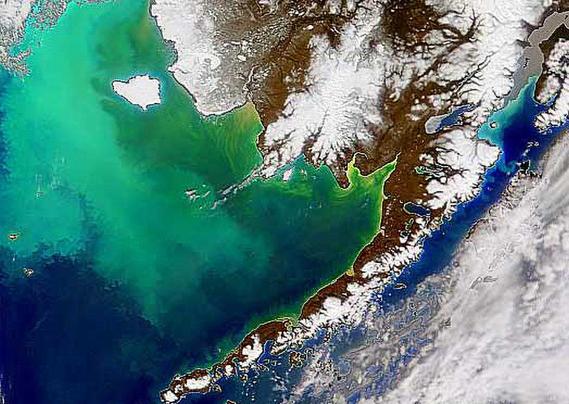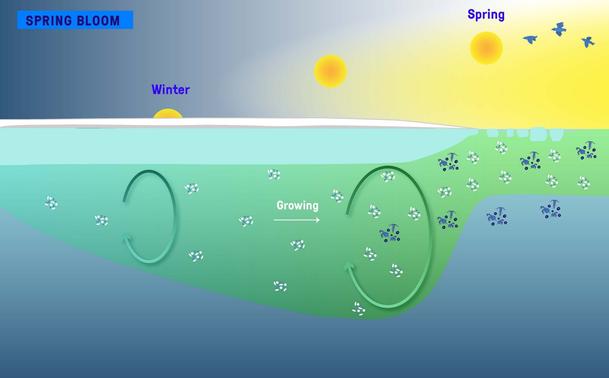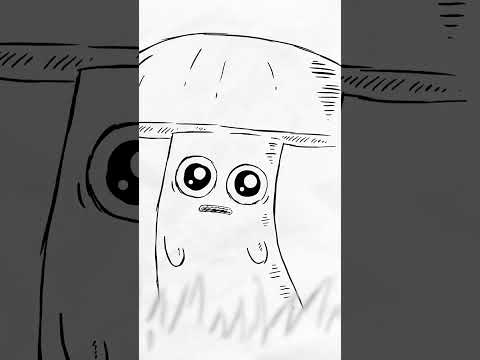Weekend #Plankton #Factoid
When a species has no close relatives, with only a single unique species within a genus, we refer to it as a monospecies or monotypic genus. Well-known, often strange examples include the aardvark and platapus. Zooplankton also have these, some being quite contentious because they are often phenotypically plastic (variable features) but are genetically similar. Bythotrephes longimanus, a Great Lakes invader is one of these.
https://www.nature.com/articles/s41598-021-02648-7
#Science #genetics
Recent searches
Search options
#plankton
Amazing diversity of shapes found among #plankton-feeding fishes https://theconversation.com/we-study-planktivores-and-found-an-amazing-diversity-of-shapes-among-plankton-feeding-fishes-254296 paper by Isabelle Ng et al.: https://link.springer.com/article/10.1007/s11160-025-09940-z
"Some truly fit the typical plankton-feeding #fish model with a forked tail, torpedo-shaped body, large eyes, small extendable jaws. But most others break the mould entirely. Tiny #gobies cling onto whip corals & adopt a sit-and-wait approach for plankton to pass by. Other deep-bodied #damselfishes depart a small distance from their coral hosts to feed."
Weekend #Plankton #Factoid
With spring upon us in the northern hemisphere, it is the time for the spring bloom in many lakes and oceans. To grow, #phytoplankton require #nutrients and #light, so start reproducing rapidly due to an abundance of nutrients mixed in the water column and increased light intensity
. Zooplankton grazers have yet to increase, and warming conditions help to retain algae near the surface euphotic zone via stratification.
https://serc.carleton.edu/eet/phytoplankton/primer.html
#Science #climate
Weekend #Plankton #Factoid
Autotrophs are organisms which use pigments for photosynthesis by absorbing light at specific wavelengths. The dominant chlorophyll-a absorbs #light in the violet-blue (430nm) and red (660nm) wavelengths, but not green, which is why #algae is green. Phycocyanin, an accessory #pigment in #cyanobacteria, absorbs in those green wavelengths, so is blue in colour. This is why we can determine algae types from space.
https://scitechdaily.com/new-research-suggests-earths-first-oceans-werent-blue-they-were-green/
#Science #satellites #oceans
It’s the little things that count https://aappartnership.org.au/its-the-little-things-that-count/
"Deep inside the icebreaker RSV #Nuyina off the coast of East #Antarctica, as 9-metre swells and 50-knot gales rage outside, the #plankton team is busy collecting tiny creatures with the wet well: a unique sampling space below the waterline, connected to the ocean by large inlets... the wet well enables particularly fragile #animals, like #salps and #jellyfish, to be captured alive and in good condition."
Weekend #Plankton #Factoid
The study of #phytoplankton is difficult because of their small size. For this we thank Antonie van Leeuwenhoek (1632-1722), the "father of microbiology". This Dutch draper was self-taught in creating high-quality #microscope lenses to examine thread. He then viewed tooth scrapings and water, coined the term "animalcules" for #protozoa, and first described Spirogyra ( genus name from JHF Link) as “spirally wound serpent-wise earthy particles”. A #science was born.
Wie reagiert #Plankton auf eine Erhöhung der #Alkalinität im Ozean?
Diese Frage untersucht eine weltweit koordinierte Vergleichsstudie mit Experimenten an 19 Standorten. Auch das #GEOMAR in #Kiel ist beteiligt und testet in der #Ostsee sowie in tropischen Gewässern vor #Kenia.
Die Methode der Erhöhung der Alkalinität könnte helfen, mehr #CO2 im Meer zu binden und die #Ozeanversauerung zu bremsen.
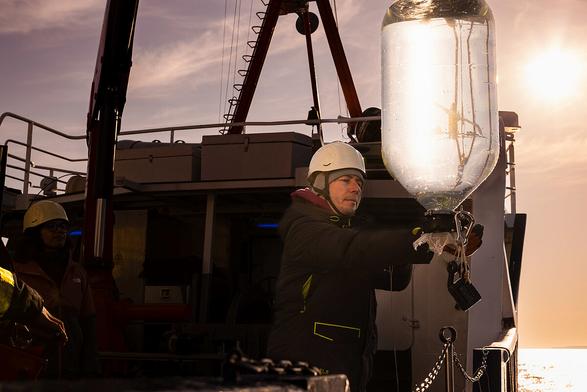
Das Löschdiskussionen in der autokratisch geführten #Wikipedia immer wieder absurd sind ist klar, aber nun hat der Youtuber #Plankton einen Wikipedia Artikel bekommen und natürlich geht die Diskussion richtig steil. Kurzum - Keine Relevanz. https://de.wikipedia.org/wiki/Wikipedia:L%C3%B6schkandidaten/20._M%C3%A4rz_2025#Plankton_(Webvideoproduzent)
Scientists love acronyms. This week's is UZELA, Underwater Zooplankton Enhancement Light Array. Corals worldwide are stressed by bleeching events due to #ClimateChange. This system uses phototactic behaviour (swim toward light) of #zooplankton to concentrate them up to 4x over reefs. #Coral polyps use their tentacles to immobilize and capture prey, which is vital when they lose their zooxanthellae algae symbionts during bleeching. #Science
https://aslopubs.onlinelibrary.wiley.com/doi/full/10.1002/lom3.10669
The Secret Sex Lives of Deep, Dark Corals
https://www.biographic.com/the-secret-sex-lives-of-deep-dark-corals/
"A unique fjord in Chilean #Patagonia gives scientists a chance to unlock the reproductive secrets of cold-water #corals that typically live thousands of meters below the surface... Instead of partnering with #algae within its cells for food, #Desmophyllum catches #plankton with stinging tentacles... cold-water corals live throughout the world’s oceans, providing habitat at least as critical as that of tropical #CoralReefs"
Weekend #Plankton #Factoid
Most aquatic scientists, particularly those working on #algae are familiar with the name Hans Utermöhl. His name is synonymous with the "Utermöhl method" of settling #phytoplankton in a slide-off sedimentation chamber, with the base chamber assessed using an inverted light #microscope (which he helped develop). Every phytoplankton taxonomist uses this technique. He was foundational in the #German #limnology research community. #science
https://academic.oup.com/plankt/article/44/3/345/6562679
A pea-sized #Argonaut octopus rides atop a stinging #siphonophore through the nighttime open ocean.
.
Shot several miles off West Palm Beach, FL, USA.
.
#papernautilus #nautilus #cephalopod #plankton #blackwater #blackwaterdiving #gug #chrisgug #gugunderwater #octopus
From Feb 3 - 7 2025 two members of my lab joined our CCGS Samuel Risley icebreaker to sample onboard for the binational
Great Lakes WinterGrab. In doing so we had many issues collecting #zooplankton due to the ice and slush which formed in the nets. In spite of this we found several species of copepods carrying eggs. One of these is the calanoid Leptodiaptomus sicilis. Egg counts are vital for calculating secondary production.
The BLOG https://greatlakesfoodwebs.com/breaking-the-ice-for-the-wintergrab/
Being a big SpongeBob fan for forever, pretty psyched for Plankton: The Movie that comes to Netflix on March 5.
For a 1922 microscope I refurbished myself this week, but still retaining all-original parts, this is not bad at all.
The quality of the image is not down to the 1922 optics; it's a product of a poor mobile phone camera from 100 years later!
Weekend #Plankton #Factoid
Continuing the Fram story, after calculating it would take the ship up 5 years to get to the north pole, Nansen and Johansen (chosen because Nansen was not great with the dogs) abandoned the ship and set off on March 14 1895 using an Inuit model of dog sledge, kayaks, and skis. The plan was to head for the pole and return via Franz Josef Land, a northern archipelago only recently mapped, so undertaking some risk given they had problems knowing their direction.
1/6
Ich glaube Leute sollten #Plankton|s #Animationen wirklich für #Automaten lizensieren...
#Plankton aka #CreaturesFromTheAbyss (1994)
When five teenagers embark on a boating trip, they stumble on an abandoned yacht in the midst of a storm. Unbeknownst to them, there are also ferocious mutated prehistoric fish running amok on the yacht.
#CreatureFeature #FilmsWithBite #FilmMastodon


